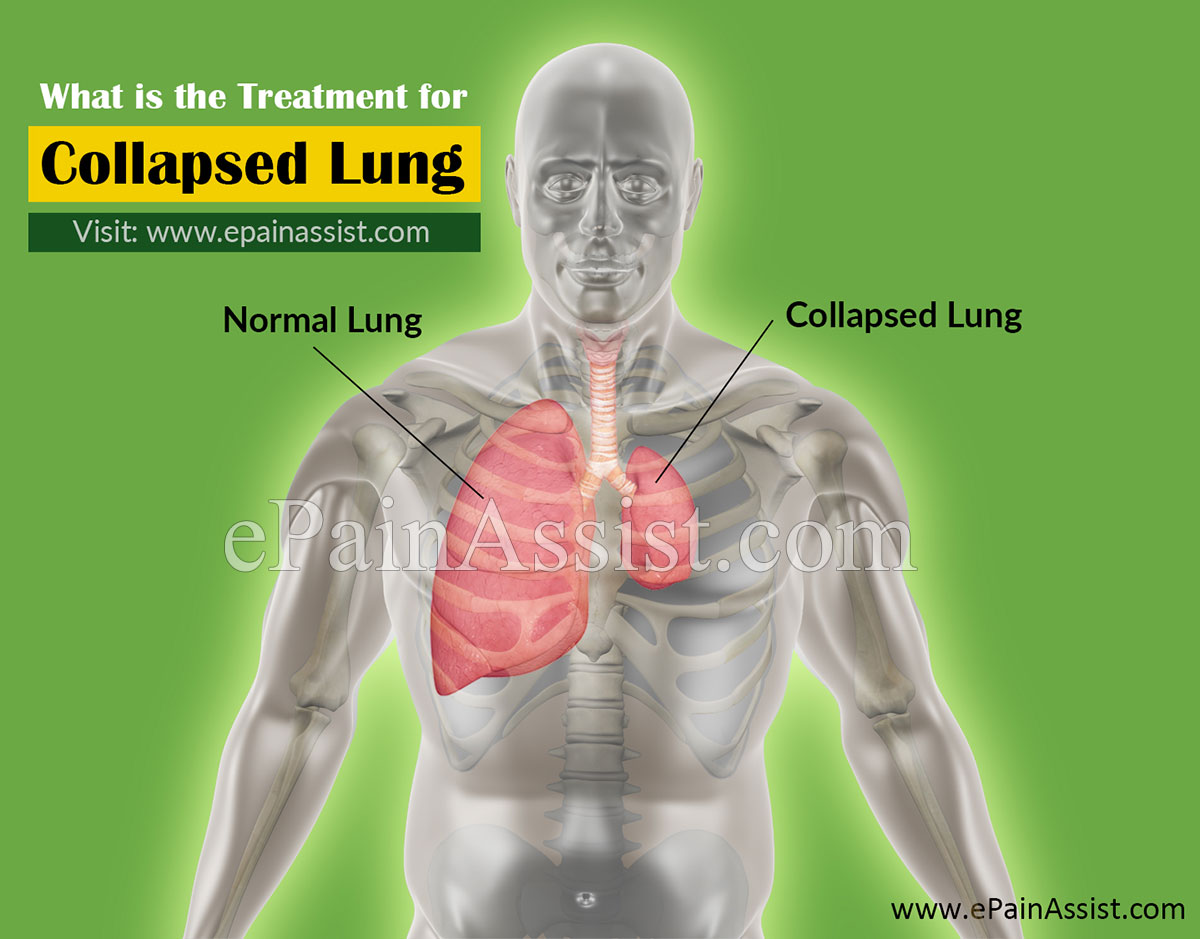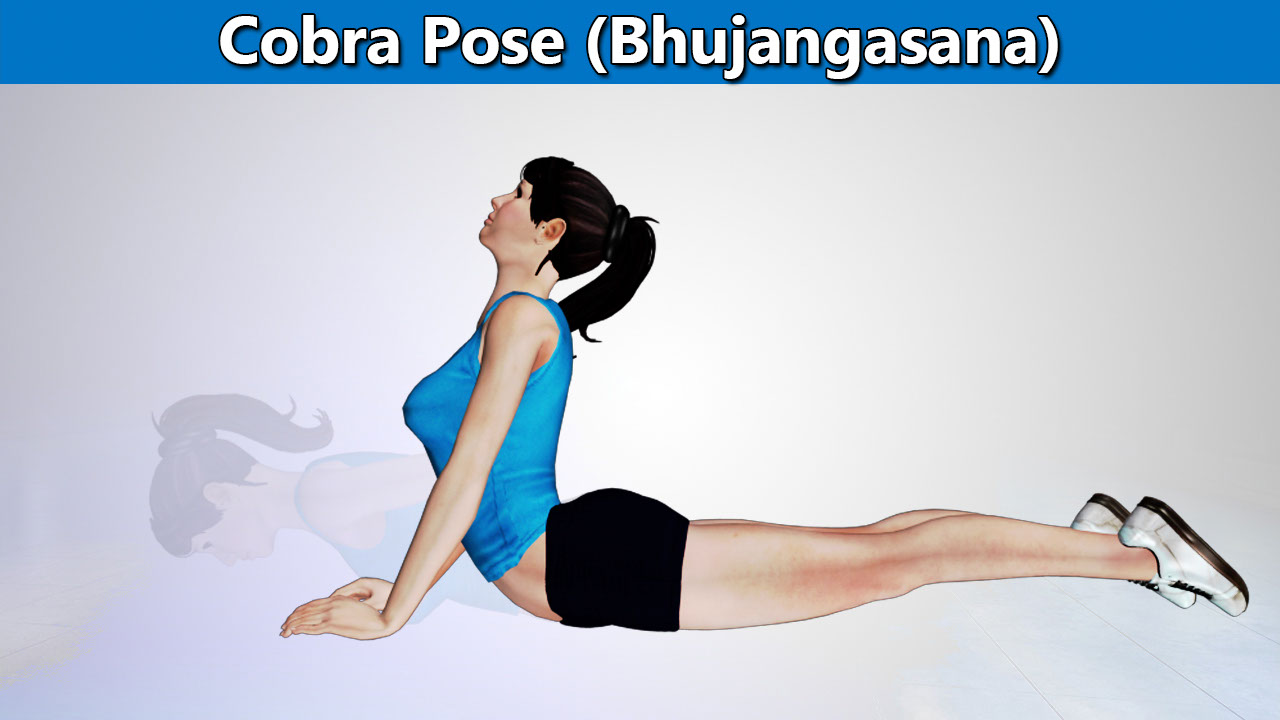What is the Treatment for Collapsed Lung (CL) or Pneumothorax?
The main purpose of treating collapsed lung (CL) or pneumothorax is to release the stress from the lung, making it possible to expand again and finally to limit the recurrences. The best way to achieve it depends on the severity of the disorder. Sometimes, the treatment depends on the overall condition of health.

If a minor part of the lung is affected in collapsed lung (CL) or pneumothorax, the physician can merely observe the condition taking sequential test X-rays till the complete absorption of the air and reexpansion of lung. Usually, this process takes one or two week. Subsidiary oxygen can speed up the process of absorption.
Insertion of Chest Tube or Needle for Collapsed Lung (CL) or Pneumothorax
Insertion of chest tube or needle is suggested for collapsed lung (CL) or pneumothorax to take away the air if the greater part of the lung is collapsed. The concave tube or needle is put into the air-filled space between the ribs. The doctor can remove the excess air with a syringe. Chest tube attached to suction apparatus constantly passes air out of chest-cavity.
Surgical Procedure for Collapsed Lung (CL) or Pneumothorax
If the chest tube or needles fails to work to resolve the collapsed lung (CL) or pneumothorax, surgery is recommended to lock the air-leak. Generally, the surgery is performed with cutting of the body tissues, using a small fiberoptic camera and tapered poll handled surgery tools. The doctor will search the leakage bleb and close it by stitching. Sometimes, talc like substance is blown into the tube to excite the tissues near the lung in order to fasten them together. This process closes up the leaks.
Rarely, on the odd occasion the doctor may create a bigger opening between the leaves to have comparatively good access to manifold or bigger air-leaks. If the patient suffers from collapsed lung (CL) or pneumothorax repeatedly or the lung refuses to expand even after five days of incision of the chest tube, the following operative therapy may be suggested.
- VATS (Video Assisted Thoracoscopic Surgery) or thoracoscopy
- Sclerotherapy or pleurodesis or electrocautery
- Laser treatment
- Surgical removal of pleura or blebs
- Open thoracotomy
Medications for Collapsed Lung (CL) or Pneumothorax
Medications are used to help in management for collapsed lung (CL) or pneumothorax:
- Local Anesthetics (For example, Lidocaine Hydrochloride)
- Opioid anesthetics (For example, Morphine, Fentanyl Citrate)
- Benzodiazepines (For example, Lorazepam, Midazolam)
- Antibiotics (For example, Cefazolin, Doxycycline)
What are the Suggested Lifestyle Changes for Collapsed Lung (CL) or Pneumothorax?
Below mentioned are some of the suggested lifestyle changes for collapsed lung (CL) or pneumothorax:
- Pursue the treatment plan for collapsed lung (CL) or pneumothorax as suggested by your doctor.
- After recovery, take enough rest and sleep 7 to 9 hours every night.
- Follow healthy diet.
- Drink plenty fluids for normal urine, unless any prohibition from doctors.
- Perform exercise as per doctor’s advice.
- Stay away from smoking; otherwise it may heighten up the risk of collapsed lung (CL) or pneumothorax.
- Mind the activities restricted by the doctors, such as operating no machinery or no driving. It should be obeyed strictly when the patient is taking pain medications for collapsed lung (CL) or pneumothorax.
What are Some of the Coping and Management Methods for Collapsed Lung (CL) or Pneumothorax?
Time of taking for recover from collapsed lung (CL) or pneumothorax depends on some conditions such as the reason of collapsed lung (CL) or pneumothorax, healing, how well the patient get improved, general health of the patient, and arising of some complications.
- Before leaving the hospital, the health experts will provide a list of medications.
- Know well the medications. Be confirmed about their shape, size and color. Get well informed about their daily dose.
- Always take the medicines according the instructions of the doctor.
- Keep a list of the medications with you and also include some nonprescription supplements and medications on that list.
- Ask the health expert whether it is necessary to take aspirin, because low dose aspirin therapy lessens the possibility of stroke in females and it lower down the risk of a first-time heart attack in males.
- The health care expert may recommend the medication to:
- Heal pain
- Prevent and treat infection
- Lessen inflammation in the airways
- Relaxes the airways
If you had undergone surgical procedure, take care of your injury:
- Maintain cleanliness of the wound.
- If you are advised to alter on your wound, be sure that your hands are properly washed before and after dressing.
- Never miss the provider’s follow-up schedule and regular tests.
- Fix appointments for every necessary testing.
- Consult with your health care provider about any problems or panics that you have.
Call 911 (Emergency Medical Services) if you face any Kind of Emergency Situation:
Call up the emergency services if you have one or more of the below mentioned emergency:
- Chest pain fails to respond to medicine.
- Sipping of blood when coughing
- Breathing trouble
- Turning of fingernails or lips into gray or bluish
- Experiencing the feeling that you will die.
Never neglect the symptoms if you really face them. Contact Your Doctor for Collapsed Lung (CL) or Pneumothorax in case you face new situation like:
- Anxiety
- Chest pain during breathing
- Coldness or sweats
- Disorientation
- Expelling blood-stained thick mucus by coughing.
- Symptoms of infection close to the surgical wound. These are:
- The area about the wound gets reader or more painful.
- The wound gets warm to feel.
- The fluid like blood, pus etc… come out of wound area.
- Your body-temperature may get higher than 38.6° C (101.5° F)
- You feel muscle aches and chills.
- Breathing trouble wakes you up at nighttime or experiencing trouble breathing if lying flat.
What Exercises are recommended for Collapsed Lung (CL) or Pneumothorax?
As a part of treatment breathing exercises are helpful for collapsed lung (CL) or pneumothorax. If not performed, the muscles surrounding the rib cage get stiff. It leads to breathing problem as the hard muscles attempt to spread out. In addition, taking short breaths will lead to lesser oxygen intake. Oxygen is vital for the body to recover and it maintains the activity levels without becoming exhausted.
Benefits of Exercises for Collapsed Lung (CL) or Pneumothorax
Breathing exercises lead to the elasticity of lung tissue and make the breathing easier to a great extent for the patients of collapsed lung (CL) or pneumothorax. Furthermore, coughing and deep breathing lessens the frequency of atelectasis further. It occurs when the alveoli, the tiny air sacs of the lung collapse and contract on them. Deep breath forces the air into the sacs and keeps them open. These air sacs exchange carbon dioxide and oxygen to the bloodstream. The atelectasis is able to decrease the oxygen amount that blood can take to the tissues.
You can heal yourself from collapsed lung (CL) or pneumothorax if you practice deep breathing techniques. Practice it by lying on back and placing the palms on your abdomen near your ribs. Inhale deeply and slowly by using the abdomen to pull air into the lung. According to the information on the webpage of University of Missouri Website, these kinds of workouts help to supply air to the lower areas of the lung. It reduces the possibilities of atelectasis. You may make humming sound during exhalation. Inhale long and deep breath, and make humming sound when exhale. Try to hum as long as possible, at least 2 to 3 minutes. Before you undertake these breathing exercises, consult the doctor.
What Yoga Poses /Asanas are recommended for Collapsed Lung or Pneumothorax?
After complete recovery from the collapsed lung (CL) or pneumothorax, yoga is suggested for strengthening the lungs. It is not to be done during the treatment or immediately after the cure.
- The alternate nostril breathing technique or nadi shodhan pranayama for collapsed lung (CL) or pneumothorax: This kind of breathing technique relief stress and calm your mind. In addition, this technique of breathing bears remedial effect on different circulatory and respiratory crisis.
- The cobra pose or bhujangasana for collapsed lung (CL) or pneumothorax is highly suggested for correcting the lung issues as this asana enlarge the chest and develop circulation of blood.

- The sitting half spinal twist or ardha matsyendrasana for collapsed lung (CL) or pneumothorax sends a high volume of oxygen to the lung by opening the chest. Thus, it reduces the chances of future lung problems.

- The wind relieving pose or pavanamuktasana for collapsed lung (CL) or pneumothorax: The people with asthma get highly benefited with this pose as it manipulates the organs of the abdomen and improves digestion and releases gas.
- The bridge pose or setubandhasana for collapsed lung (CL) or pneumothorax opens up the lung and the chest and decrease the Thyroid problem. It also boosts up digestion and brings relief to asthma patients.

- The downward-facing dog pose or adho mukha svanasana for collapsed lung (CL) or pneumothorax is helpful for those suffering from sinusitis and asthma, and it relieve stress and calm down the mind.

- The butterfly pose or Badhakonasana also has the therapeutic benefit for collapsed lung (CL) or pneumothorax. Besides, this asana improves and stimulates blood circulation and ease the sense of exhaustion.

- The upward plank pose or poorvottanasana for collapsed lung (CL) or pneumothorax improves the system of respiration, boosts up the function of Thyroid gland, and strengthens arms, wrists, spine, back also.
- The corpse pose or Shavasana for collapsed lung (CL) or pneumothorax is the ending posture of yoga practice. It keeps the body in a contemplative pose, revitalizes you and helps to decrease worry and anxiety. The relaxed body and mind is the essence of dealing with the problem of asthma.

It is very important to note yoga should never be practiced without the recommendation of professional experts. Only after consultation with them you are advised to practice yoga every day at home. Do not jump start yoga, take 20 minutes to relax your mind before you start.
Get in touch with the doctor prior to beginning yoga classes. Inform him/ her about the readiness of the sessions.
Also Read:
